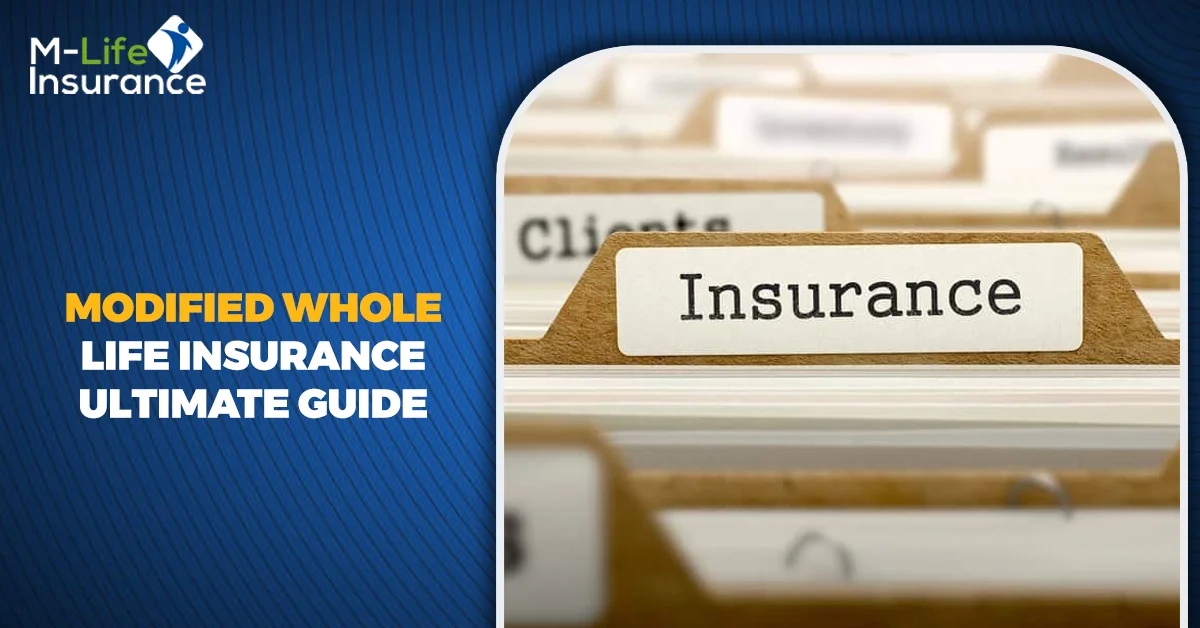Are you searching for a financial safety net that’s more affordable, yet provides lifelong protection? Imagine a policy that starts with budget-friendly premiums, ensuring you get the coverage you need without breaking the bank. Modified whole life insurance does just that. It combines the best of both worlds: the security of lifelong protection and a cash value component that grows over time.
Whole life insurance is a popular choice for many people, but it can be expensive. Modified whole life insurance is a lesser-known option that offers lower initial premiums, making it more affordable for young people and those on a budget.
In this blog post, we’ll break down various aspects about modified whole life insurance, including its working, unique benefits, the costs involved, and much more. So, if you’re curious about how to safeguard your future without compromising your current financial stability, read on. It’s time to unravel the mysteries of modified whole life insurance.
What is a Modified Whole Life Policy?
A Modified Whole Life Policy is a specialized form of permanent life insurance designed to provide a combination of lifelong coverage and affordability. Unlike traditional whole life insurance, which has level premiums throughout the policy’s life, modified whole life insurance offers a unique two-phase premium structure.
In the initial phase, policyholders pay lower premiums, typically for a predetermined period, often around five years. This initial phase aims to make the policy accessible to individuals with budget constraints. Following this period, the premiums increase to a higher, fixed level, which remains constant for the duration of the policy.
How Does Modified Premium Whole Life Work?
Modified Premium Whole Life insurance operates on a unique two-phase premium structure that distinguishes it from traditional whole life insurance. This structure is designed to strike a balance between affordability and lifelong coverage. Let’s break down how it works:
Initial Phase
In the first phase of a modified premium whole life policy, policyholders pay lower-than-average premiums. This phase typically lasts for a specified period, often around five years, but it can vary depending on the policy terms. The lower initial premiums make the policy more accessible to individuals who may have budget constraints or want to allocate funds to other financial priorities.
Transition Phase
After the initial phase concludes, the policy enters a transition period. During this phase, the premium gradually increases. The increase is incremental and predetermined, and it’s often designed to level off at a higher, fixed premium amount that remains consistent for the rest of the policy’s lifetime. This transition phase varies from policy to policy but is typically set to ensure that the policy remains financially sustainable over time.
Stable Premium Phase
Once the policy enters the stable premium phase, policyholders will pay the same level premium until the policy’s maturity or until they pass away. This phase provides long-term financial stability and predictability, allowing for better financial planning.
The gradual transition from lower initial premiums to the stable, higher premiums distinguishes modified premium whole life insurance from traditional whole life insurance, making it more accessible to those who need affordable entry points while still desiring lifelong coverage.
What is the Cash Value of Modified Whole Life Insurance?
One of the key features of whole life insurance, including modified whole life, is its cash value component. A portion of the premiums paid goes into a cash value account, which accumulates over time and can be accessed by the policyholder. The cash value can serve as a source of funds for various purposes, such as loans, withdrawals, or even as a supplementary retirement income.
Benefits of Modified Whole Life Insurance
Modified Whole Life Insurance offers several benefits that make it an attractive choice for individuals seeking a balance between affordability and lifelong coverage. Let’s explore these advantages:
1- Lifelong Coverage
Modified whole life insurance provides coverage for your entire life. This means that as long as you pay your premiums, your beneficiaries are guaranteed to receive a death benefit when you pass away. This can bring peace of mind, knowing that your loved ones will have financial protection.
2- Cash Value Growth
Similar to traditional whole life insurance, modified whole life policies accumulate cash value over time. A portion of your premiums is invested, and this cash value grows tax-deferred. You can access the cash value through loans or withdrawals, providing you with a financial safety net for unexpected expenses or opportunities.
3- Affordable Start
One of the key benefits is the lower initial premiums during the initial phase of the policy. This feature makes modified whole life insurance more accessible to individuals who may have budget constraints but still want to secure lifelong coverage.
4- Stable Premiums
After the initial premium phase, the policy enters a stable premium phase where the premiums remain fixed. This predictability allows for better financial planning, as you won’t have to worry about fluctuating insurance costs.
5- Guaranteed Death Benefit
Your beneficiaries are assured of receiving a death benefit when you pass away, regardless of when it occurs. This financial security can be a crucial part of your estate planning.
How Much Does Modified Whole Life Insurance Cost?
The cost of modified whole life insurance can vary significantly based on several factors, including your age, gender, health, the length of the initial premium phase, and the desired coverage amount. To provide a general idea of the cost, here is a sample table with estimated monthly premiums for different age groups and coverage amounts.
| Age Group | Coverage Amount | Initial Phase Monthly Premiums | Stable Premium Monthly Premiums |
| 25-30 | $100,000 | $20 – $30 | $50 – $70 |
| 25-30 | $250,000 | $40 – $60 | $100 – $140 |
| 35-40 | $100,000 | $30 – $40 | $60 – $90 |
| 35-40 | $250,000 | $60 – $80 | $120 – $180 |
| 45-50 | $100,000 | $40 – $60 | $90 – $120 |
| 45-50 | $250,000 | $80 – $110 | $180 – $240 |
Moreover, to get accurate pricing for modified whole life insurance, it’s recommended to request quotes from insurance companies, which will consider your specific details such as health, location, and other personal factors.
Who Should Buy Modified Whole Life Insurance?
Modified whole life insurance is a suitable choice for individuals who:
- Seek lifelong coverage but can’t afford the higher initial premiums of traditional whole life insurance.
- Want a policy that builds cash value over time, providing financial flexibility.
- Are looking for a stable premium structure for better long-term financial planning.
It’s essential to carefully assess your financial situation and long-term goals before deciding if modified whole life insurance aligns with your needs.
What Is the Difference Between Whole Life and Modified Whole Life?
1- Whole Life, Premiums structure
The primary difference between whole life and modified whole life insurance lies in the premium structure. Whole life insurance has level premiums that remain constant throughout the policy’s lifetime. In contrast, modified whole life insurance starts with lower premiums that increase after an initial period.
2- Modified Whole Life, Affordability
Modified whole life insurance is designed to be more affordable initially, making it accessible to a broader range of individuals. Traditional whole life insurance might be more suitable for those who can comfortably afford level premiums from the start and want to build a higher cash value early on.
The Bottom Line
Modified whole life insurance can be an excellent choice for those who seek lifelong coverage and a cash value component but need more accessible initial premiums. It provides a stable financial foundation while allowing for the growth of cash value over time. Understanding the nuances of this policy type and assessing your financial goals is crucial in making an informed decision about whether modified whole life insurance is the right choice for you.
Frequently Asked Questions (FAQs)
1- Is modified whole life insurance only for young people?
No, modified whole life insurance is not exclusive to young individuals. While it can be a particularly attractive option for young people due to the lower initial premiums, it is available to anyone looking for affordable lifelong coverage. Your eligibility and the cost of the policy will depend on various factors, including your age, health, and specific policy terms.
2- Is it possible to customize the length of the initial premium phase?
The length of the initial premium phase is typically predetermined by the insurance company, often around five years. However, the specific terms and conditions may vary between policies and providers. It’s essential to discuss your preferences and options with your insurance agent to see if there is any flexibility in tailoring the initial premium phase to your needs.
3- Can you convert a modified whole life policy into a traditional whole life policy?
Some insurance companies may offer the option to convert a modified whole life policy into a traditional whole life policy after a certain period. This conversion option could be beneficial if your financial circumstances change, and you wish to have level premiums throughout the policy’s lifetime. Check with your insurance provider regarding the availability and terms of such conversions.
4- Is there a medical exam required to qualify for modified whole life insurance?
Most insurance companies do not require a medical exam for modified whole life insurance, making it an accessible option for individuals who may have health concerns. However, the specific requirements may vary between insurance providers, so it’s essential to inquire with them about their underwriting process.
5- Can you increase the coverage amount of your modified whole life insurance policy over time?
Yes, it is often possible to increase the coverage amount of your modified whole life insurance policy. This is typically done by purchasing additional riders or adding to your existing policy. Keep in mind that increasing your coverage will also result in higher premiums during the stable premium phase.

Here is our expert author, Iqra, your go-to source for simplified insights into the world of life insurance. With years of industry experience, Iqra delivers concise and approachable content, ensuring you navigate the complexities with confidence.

